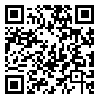1. 1- اخوان صراف، احمدرضا (2006). مدیریت تغییر برای اجرای فناوری اطلاعات. ماهنامه تدبیرسال هفدهم شماره 173، ص 10- 1.
2. اشرف گنجویی و همکاران (1389). توصیف نگرش مدیران ستادی ادارات تربیت بدنی استان گلستان نسبت به ابعاد مدیریت تغییر. بانک مقالات SID، ص 48- 43.
3. خوانساری زاده، س.ا. شیرمحمدی، م. (1394). بررسی و اولویت بندی مخاطرات برون سپار ی پروژه ه ای فناور مطالعه موردی: پروژه های زیرساخت فناوری اطلاعات و ارتباطات)، نشر یه (ICT) اطلاعات و ارتباطات مدیریت فناوری اطلاعات، 7 (1).69-84،
4. رضایی، مسعود (1389). نظریه های رایج درباره پذیرش فناوری اطلاعات و ارتباطات، فصلنامه پژوهشهای ارتباطی سال شانزدهم شماره 4، ص 321
5. صحراگرد جهرمی، عبدالرسول (1384). بررسی تاثیر بکارگیری فناوری اطلاعات بر بهره وری سازمان از دیدگاه مدیران پایان نامه کارشناسی ارشد دانشکده مدیریت و حسابداری دانشگاه شهیدبهشتی تهران، ص 7.
6. صنایعی، علی (1392). «تحلیل موانع به کارگیری فناوری اطلاعات در ادارات ورزش و جوانان استان فارس با استفاده از رویکرد تصمیم گیری چند معیاره فازی». مدیریت ورزشی _ تابستان 1393 دوره 6، شماره 2، ص 342-325.
7. فیروزیان، محمودو همکاران.(1386). عوامل مقاومت کارکنان در برابر برنامه های بهبود (تغییر) سازمانی (مطالعه موردی). دو ماهنامه مدیریت: شماره 123 و 124. صفحه 6.
8. علیدوستی، سیروس. (1387). «موانع کاربرد فناوری اطلاعات از نگاه مدیریت تغییر». ص 215-210.
9. موسی خانی، م. مانیان، ا. محمودی، ج. کارگر، م.ح. (1396). ارائه چارچوب جامع راهبر ی فناور ی اطلاعات وبومی سازی آن برای صنعت خودروی ایران (مطالعه موردی: مادرشرکت خودروی اطلس)، نشریه مدیریت فناوری اطلاعات. ص 143-165
10. میرمحمدی، حمید (1383). مدیریت تغییر و به کارگیری آن در چارچوب مدیریت فرآیند سازمان پایان نامه کارشناسی ارشد. تهران: دانشگاه تهران، دانشکده فنی، ص 14-12
11. نفری، ندا (1390). طراحی مدل پذیرش فناوری اطلاعات در شرکت ملی گاز ایران بر اساس مدل پذیرش فناوری، بانک مقالات SID، ص 1- 5
12. نوری، ابوالقاسم (1379). مقاومت در برابر تغییر و شیوه های برخورد با آن. تهران: مرکز آموزش مدیریت دولتی،51-69
13. Abdel-Ghany, M. (2014). Readiness for change, change beliefs and resistance to change of extension personnel in the New Valley Governorate about mobil extension. Annals of Agricultural Science, 59(2), 297-303 [
DOI:10.1016/j.aoas.2014.11.019]
14. Akram, M. S. (2005). Managing Changes to Service Oriented Enterprises. MA thesis, Faculty of the Virginia Polytechnic Institute and State University, US
15. Armenakis, A. Bernerth, J. Pitts, J. & Walker, H. (2007). Organizational changerecipients' beliefs scale: development of an assessment instrument. The Journal of Applied Behavioral Science, 43(4), 481-505 [
DOI:10.1177/0021886307303654]
16. Barbaroux, P. (2011), Adesign‐oriented approach to organizational change: insights from a military case study. Journal of Organizational Change Management. Pp 14-17
17. Bain & Company Report.(2015),report management Tools & Trend 2015. available at: www.bain.com/management_tools/BainTopTenTools/default.asp
18. Bohene, R. (2012). Resistance to organisational change: a case study of Oti Yeboah Complex Limited. International Business and Management, 4(1), 135-145.
19. Brown, D. & Wilson, S. (2005). The Black Book of Outsourcing: How to Manage the Changes, Challenges, and Opportunities, 1th edition, John Wiley & Sons, Inc. Hoboken, New Jersey.
20. Chuttur, Mohammad(2009),Overview of the Technology Acceptance Model:Origins, Developments and Future Directions, Working Papers on Information Systems.Pp 1-14
21. Davis, F. (1989). Perceived usefulness perceived ease of use, and user acceptance of information technology. MIS Quarterly, (13, 3), 3-5. [
DOI:10.2307/249008]
22. Dehning, Bruce, and Vernon J. Richardson. (2002). Returns on investments in information technology: A research synthesis. Journal of Information Systems 16 (1): Pp 7-30. [
DOI:10.2308/jis.2002.16.1.7]
23. Dibbern, J. Goles, T. Hirschheim, R. & Jayatilaka, R. (2004). Information Systems Outsourcing: A Survey and Analysis of the Literature. Data Base for Advances in Information Systems, 35(4), 96-102. [
DOI:10.1145/1035233.1035236]
24. Grover, V. & Teng, J. T. (1993). The decision to outsource information systems functions. Journal of Systems Management, 44(11), 34-38.
25. Kwahk, K. & Lee, J. (2008). The role of readiness for change in ERP implementation: Theoretical bases and empirical validation. Information & Management, 45(7), 474 - 481. [
DOI:10.1016/j.im.2008.07.002]
26. Lines, B. Sullivan, K. Smithwick, J. & Mischung, J. (2015). Overcoming resistance to change in engineering and construction: Change management factors for owner organizations. International Journal of Project Management, 33(5), 1170-1179. [
DOI:10.1016/j.ijproman.2015.01.008]
27. Oreg S.(2013); Personality, context, and resistance to organizational change. European Journal of Work and Organizational Psychology 2013; 15(1): Pp 73-101. [
DOI:10.1080/13594320500451247]
28. Prosci.(2003) (ADKAR). A model for change management, change management center.
29. Ramanathan, T.R. (2009). The role of change management in implementing the offshore outsourcing business model: a procedural view. Service Business, 3, 341-358 [
DOI:10.1007/s11628-009-0071-9]
30. Rusly, F. Corner, J. & Sun, P. (2012). Positioning change readiness in knowledgemanagement research. Journal of Knowledge Management, 19(6), 1204 [
DOI:10.1108/JKM-02-2015-0092]
31. Sarayeh B, Khodair H; (2013), Comparative study: The kurt Lewin of change management. International of computer and IT.2279 - 0764,v 02. Pp 6-9
32. Schneider, S. & Sunyaev, A. (2016). Determinant factors of cloud-sourcingdecisions: reflecting on the IT outsourcing literature in the era of cloudcomputing. Journal of Information Technology, 31(1), 1-31 [
DOI:10.1057/jit.2014.25]
33. Sun, H. & Zhang, P. (2006). The Role of Moderating Factors in User Technology Acceptance. Int. J. Human-Computer Studies, 64, Pp 53-78 [
DOI:10.1016/j.ijhcs.2005.04.013]
34. Venkatesh, V. & Davis, F.D. (2000). A theoretical extension of the technology acceptance model: four longitudinal field studies, Management Science, 46 (2), Pp 186-204. [
DOI:10.1287/mnsc.46.2.186.11926]
35. Willcocks, L.P. & Lacity, M.C. eds. (2016). The new IT outsourcing landscape from innovation to cloud services. Switzerland: Springer
36. Worley, C. & Mohrman, S. (2014). Is change management obsolete? Organizational: Dynamics, 43(3), 214-224 [
DOI:10.1016/j.orgdyn.2014.08.008]
37. Wu, S. Straub, D. & Liang, T. (2015). How information technology governance mechanisms and strategic alignment influence organizational performanceInsights from a matched survey of business and it managers. MIS Quarterly3,39(2),497-5718 [
DOI:10.25300/MISQ/2015/39.2.10]
38. Ziemba E; (2015), change management in information systems project for public organizations in Poland.interdiciplinary journal of information knowledge and management.10, Pp 47-62. [
DOI:10.28945/2185]








